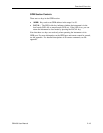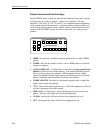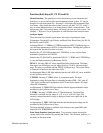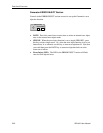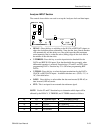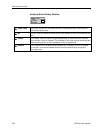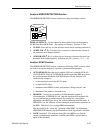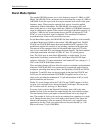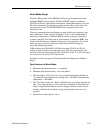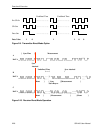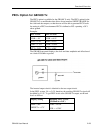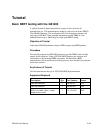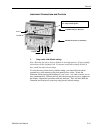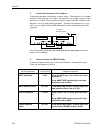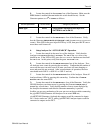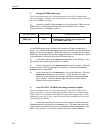
Functional Overview
GB1400 User Manual 2-27
Burst Mode Usage
The Burst Mode option of the GB1400 will find usage in applications where
traditional BERTs cannot operate. Traditional BERTs require a continuous
CLOCK and DATA signal with no interruption. Should interruptions occur, the
RX will resynchronize or indicate errors that actually did not occur due to the
asynchronous re-start. The BURST MODE allows operation with a non-
continuous clock.
There are communications and telemetry systems that do not necessarily send
data continuously. These systems send data in "bursts" with variable times of
inactivity between bursts. Traditional BERTs cannot accurately check these
systems, especially if the bursts are of short duration. A traditional BERT may
require more bits than are available in the burst to (re)synchronize. Even if the
bursts are large, many bits in the burst would not be checked during the
(re)synchronization procedure.
In Burst Mode, the GB1400 RX will follow the input CLOCK and DATA
without regard for inactive time between bursts. The only requirement is that
there be no bit slips between the CLOCK and DATA at the Tx or UUT and there
be a clock cycle for every DATA bit received.
See figures on the next page for Transmit and Receive Operation with Burst
Mode.
Specifications for Burst Mode
• Maximum time between bursts - no restriction
• Minimum time between bursts - one clock period
• RX Clock Input - ECL level only; User-selectable termination 50 Ohms to
-2V should be used. Minimum rate during burst - 150 kbit/s; Maximum rate
during burst - 1400 Mbit/s
• RX Auto Search restriction - Below 500 kbit/s, the Auto Search function can
take a very long time due to code word search. Finding both Threshold and
Delay is rapid, but Data Pattern search is lengthy. Because of this, the user
should use Manual Search Mode to keep synchronization time as low as
possible.
• Restriction on other options - None



